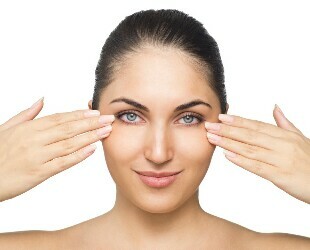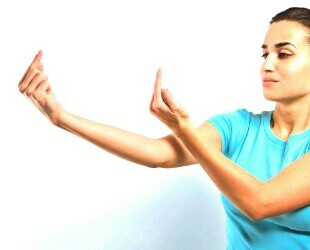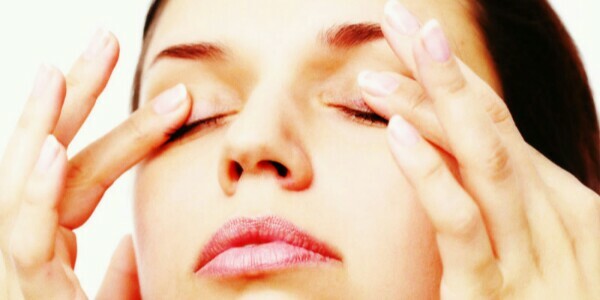
There is a common opinion that reduced vision can not be restored.
But thanks to the achievements of science in the last decades, a large number of effective techniques have emerged that can restore the former visual acuity.
These include microsurgery of the eye, wearing special glasses and lenses, physiotherapy and electrical stimulation of the eye muscles.
Unfortunately, all these methods require either medical intervention, or the availability of special equipment, or considerable cash investments.
Restorative gymnastics of the eyes can be performed by patients independently and without the availability of expensive adaptations, and its effectiveness is not inferior to other methods.
- 1. What is the gymnastics for the eyes
- 2. Workout
- 3. Gymnastics for myopia
- 4. Gymnastics for hyperopia
- 5. For children
- 6. How often should I resort to gymnastics for the eyes?
- 7. Conclusion
- 8. Interesting video
What is the gymnastics for the eyes
Gym for visual restoration is a complex of specially selected exercises that are performed consistently with strict observance of the technique.

The first exercises were invented many centuries ago: ancient Hindus and Chinese, who developed health complexes for the whole organism, did not ignore the eyes.
But modern gymnastic complexes, used in traditional medicine, appeared thanks to the famous scientist William Bates and his successor Margaret Corbet.
Their effectiveness is proved by a lot of experiments and scientific research, but to achieve the maximum possible result it is necessary to perform exercises regularly, take care of the general condition of the whole organism and refrain from bad habits.
Warm up
Like any other activity, restorative gymnastics should always be started with a light workout to relax your eyes and warm up the eye muscle.
Next, we will analyze the basic exercises for warm-up.
Braiding for the eyebrow

It's worth starting any lesson with it. Because of the prolonged strain on the eyes, the superciliary muscles are constantly stressed. Outwardly this is manifested by the overhanging of the eyebrows and eyelids above the eye.
Raise your eyebrows as high as possible and try to feel the tension near the ears. If you managed to do this, then you are doing everything right.
Repeat the movement until you feel that the superciliary muscles have relaxed.
Palming
This exercise will relax not only the eyes, but the whole body. Close your eyes with open palms in such a way that the little fingers of both hands cross on the nose.
Do not push your eyes too hard, they should open and close freely. Take a comfortable pose and wait until bright colored flashes cease to appear before your eyes.
Stay in this position for at least 5 minutes.
Letter
Imagine that your nose is a pen or brush. Write the alphabet first, then the numbers from one to ten.
Repeat the exercise 3 to 5 times and you will feel considerable muscle relaxation and improved vision.
Gymnastics for nearsightedness
Gymnastics for myopia is performed at least 4 times a day in the intervals between activities related to eye strain.

The following sequence of exercises is usually assigned:
- rotate the eyeballs 8 times in each direction, keeping the back straight;
- draw eyes horizontal and vertical lines, draw each line 8 times;
- quickly blink your eyes, then squeeze them as much as possible and open, repeat 8 times;
- trace the imaginary lines diagonally from each angle of the field of view, draw each line 8 times;
- go to the window and look at the furthest object, and then look at another object that is as close as possible, holding each of them for 5 seconds, repeat 8 times.
Begin to carry out these complexes only after the warm-up described above. This will help achieve the maximum effect in the shortest possible time.
Farsightedness
Farsightedness exercises are performed at least 2 times a day with a gradual increase in the number of approaches:
| Description of the exercise | |
| 1 | Draw with the eyes of the line up and down( 5 repetitions) |
| 2 | On the window, glue a small round piece of paper not more than 10 mm indiameter, move away from the window opening by 1.5 meters and look at the street through the paper, without focusing her eyes, and then quickly blink your eyes( 3 repetitions) |
| 3 | Look at the dial of the clock with an arrow, alternately fixingLook at the numbers 3, 6, 9, 12( 5 repetitions), then repeat the same thing in the opposite direction |
| 4 | Draw with your eyes different shapes and objects( heart, asterisk, square, circle, etc.) |
For children

Restorative gymnastics for childrenhas its own distinctive features, since up to the age of 18 the eyeball forms and grows. Ophthalmologists recommend 4 basic exercises for children's eyes.
Step gymnastics
The child stands up near the window opening and extends his hand forward, first he carefully looks at the palm, then the window frame, then peers at the nearest tree, the distant object is no closer than 100 meters and finally into the clouds.
The child should focus on each step for at least 3 minutes.
Digital gymnastics
The child closes his eyes with his hands and figures with his eyes first from one to nine, and then from nine to one.
Pointed gymnastics
Draw on the sheet of paper 10 black dots with the distance between them about half a centimeter. Ask the child to look at the leaflet, and gradually move away.
When the child can not clearly see the points and count them, stop the exercise. Repeat it 3 times.
Visual arc
Place the child on a chair in front of the window opening and ask him to focus on his lap. Then the child should slowly look up, examining each object to the ceiling and focusing on it for 3-5 seconds.
After doing such an "arc", the child must do the same, but already in the direction from the ceiling to his knees. Exercise is performed 2-3 times.
You may also be interested in other types of eye exercises:
- Tibetan gymnastics
- Exercises for Zhdanov
- Gymnastics Avetisova
How often should I resort to gymnastics for the eyes?
For various visual impairments, gymnastics is performed different number of times per day. Before performing it is always recommended to consult with the treating ophthalmologist.
Do not try to do gymnastics from the first days many times a day, increase the amount of lessons gradually.
Conclusion
- Gymnastics for vision recovery is an effective and safe method that does not require medical interventions and special equipment.
- Restorative gymnastics is indicated for all types of refractive failure.
- Gymnastics has no contraindications, but the exercises should be selected with the participation of the attending physician.
Interesting video
We recommend to watch this video:
